Developer/Publisher: Little Green Men Games/Iceberg Interactive
Release Date(s): Sep. 26, 2014
Genre(s): Space trading and combat simulator, RPG
Platform(s): Windows
Language(s): English and German; interface and subtitles for Russian
Pricing: $34.99 USD / €28,85 EUR / £24.99 GBP
Rating: E (ESRB), 12 (PEGI, USK)
2010’s Starpoint Gemini turned out to be a huge flop, and as things go in the gaming industry, you’d expect that people would have long since forgotten about the game and the studio that developed it. But against all odds, they’ve made a sequel, a game that promises to have learned from the mistakes of its predecessor. Read our test review to find out if this series deserves a second chance.
“Very well. Dr. Schlotkin, do your worst!”
Naturally enough, the storyline in Starpoint Gemini 2 takes place in the same universe as the original Starpoint Gemini. Human civilization is torn apart by the conflict between various space colonies. As the player, you take on the role of a young space captain whose father was a highly-decorated war hero in the last Gemini War. Ready to prove himself and step out of his father’s long shadow, the young captain goes off on his first mission, taking his small ship to pick something up at a nearby space station. You soon find out, however, that daddy has actually sent junior away under false pretenses because he fears an attack on his own life and wants to keep his son safe. His fears soon become reality, and his flagship is attacked and destroyed by unknown enemies. Now driven by a desire to avenge his father, the young hero-to-be sets out to collect the clues his father left behind. He soon uncovers a conspiracy that reveals a far more dangerous adversary than even the steadily expanding Empire, which has managed to gain a foothold in Gemini Sector.
“What the hell, it works on Star Trek.”
The developers of Starpoint Gemini 2 decided that it wouldn’t be necessary to reinvent the wheel. To that effect, the current title (like its predecessor) bears a strong resemblance to another space trading and combat simulator – 2008’s X3: Terran Conflict. At the beginning of the game you decide on a class, which will determine the kinds of special abilities you can acquire later in the game. As the “Commander” you can use the “Tactics” skill to temporarily make your fleet a more effective fighting force, and “Retaliate” to reflect damage back at attackers. “Defender” increases self-defense and repairing, and “Piloting” makes your own ship faster and more versatile. As the “Gunner”, on the other hand, you’ll solve most of your problems with superior firepower, and your skills will mostly focus on your offensive capabilities. The “Engineer” is much more calculating in his approach, hacking into enemy ships, making more efficient and effective use of energy, and sometimes, creating a space anomaly that causes physical, often damaging, changes to everything nearby.
These class-specific skills can only be used for a limited time, since they use up energy and have to be recharged after you use them. You can get more bonus effects by purchasing certain items and equipment, on sale on various planets and space stations. These include nano-robots that repair damaged spacecraft in open space, viral torpedoes that directly attack the crew of enemy ships in order to make them easier to board, and mobile T-drives that allow you to make hyperspace jumps within a certain radius. Rounding out your inventory are various weapons using laser beams, projectiles, plasma, as well as self-propelled ordnance like rockets. Each item in your arsenal can be installed in different slots on your spacecraft, allowing you launch waves upon waves of firepower at your enemies when they come within range if your weapons systems.
Combat engagements put the game’s tactical components on display. In contrast to its predecessor, spaceships in Starpoint Gemini 2 move about in true three-dimensional space, meaning that you will always have to pay attention to which side you turn towards or away from the enemy. It makes sense, for example, to fire your cannon in a full broadside when they’re ready to fire, but you should turn the side of your ship where the shields are weakest away from the enemy. When all this is combined with the special class skills (which are available even to NPCs), combat in Starpoint Gemini 2 turns out to be a pretty challenging experience. In addition to combat, the game features a basic economic system that allows you to finance the acquisition of new ships, which you can change out in the garage of any space station. You can buy goods in various locations, and sell them at the highest price possible. Colored arrows indicate whether a transaction is worth it or not – a red arrow, for instance, tells you that you’d be making a loss. Another source of income is the mining of asteroids. To accomplish this, you have to find an asteroid field and then shoot at the little clumps of rock floating about, which will break apart and yield valuable materials that you can pick up and then sell. The dumb thing is that the prices people will pay for raw materials are comparatively low, so it’s not really worth the effort until you can get ahold of a large freighter with a huge cargo hold.
If you’re looking to make a quick buck, however, there’s no shortage of illegal activities in the Gemini system. It’s possible to sell certain goods to independent stations, even if the goods in question are illegal in most other sectors. The prohibition of certain goods naturally causes the demand to go up, and you can make a lot of money smuggling, provided the ruling faction doesn’t wise up to what you’re doing. If you’re not quick or clever enough, you can count on having to pay a hefty fine. Piracy is another lucrative line of work, where you make your living preying upon hapless traders. Of course, choosing this career path will make you a lot of enemies among the game’s factions, making it almost impossible to complete the main storyline.
Finally, you can earn extra income by completing randomly-generated missions that will show up on your star chart. These missions are roughly divided into three different kinds. One kind has you go out and eliminate shadowy figures or render them defenseless and capture them with your tractor beam. Another kind has you travel all over the galaxy bringing people and their things wherever they want to go. The last kind of mission has you do things like investigate space anomalies from up close. Each time you complete a mission, you automatically receive the payment you agreed upon when you took it. You also get experience points, as well as a better reputation with the faction you did the job for. This is probably the surest and best way to earn money, especially since you’ll level up faster and earn skill points for your class skills, not to mention the fact that you’ll unlock special bonuses that will make you into one of Gemini Sector’s most dangerous citizens.
Unfortunately, it doesn’t take long before Starpoint Gemini 2 starts to get boring, since apart from the rather short main storyline, there’s nothing else for you to do except try to make money. And if you make it so far that you have the biggest, fattest space cruiser in the galaxy with enough firepower to blow away any opponent, the title will quickly lose any appeal it may have had. There is no motivating reason to explore the vast universe in the game, since you can buy the best ships and weapons in the same place where the main storyline began. Maybe the prospect of finding rare blueprints for lost technologies is something that will keep the most dedicated players going for a while, but that’s about it, and most of you will probably stop playing after you finish the storyline.
So what can you do when things start to get boring? A lot, as it turns out, since the developers have turned over their tools to the player community to allow them to modify the content of the game themselves. You can already find a bunch of expansions in the Steam Workshop, some of them featuring spaceships from other science fiction universes. And thankfully, it’s really easy to install them – just get the mod, download it, and activate it in the game. If they were to add a multiplayer mode, the title would make a perfect “EVE Online Light”.
“Never underestimate the power of the Schwartz!”
The controls in Starpoint Gemini 2 take some getting used to. There are simply too many important commands that the interface, including pop-up menus, does not do a good job of dealing with. Theoretically you can redirect energy to your overtaxed shields or increase the fire rate of your weapons. In practice, however, you’ll have enough on your plate just keeping the enemy in view and actually hitting him enough to weaken his ship so you can capture it. The alternative auto-fire feature brings all your tactical efforts to naught, since it will simply fire at the enemy with everything you’ve got until there’s nothing left but smoking debris. It’s best to just use mouse and keyboard, since there aren’t enough buttons on any controller to cover all the necessary commands.
“Tell ‘em to comb the desert, you hear me? Comb the desert!”
The graphics in Starpoint Gemini 2 are up to date, and the game can easily keep up with other titles currently out there. Nevertheless, players with monitors that cannot display more than 60 Hz are going to have technical problems, just like before. The screen will stay black until you minimize the game to window size (Alt + Enter). Overall though, the graphics are pretty impressive and show great deal of detail, while the technical requirements are kept at a pretty reasonable level. Since the most recent update there are no more script errors in the main storyline, which would previously cause the game to crash.
“Thank you for pressing the self-destruct button…”
The background music in Starpoint Gemini 2 stays nicely in the background and has a sort of lounge feel to it. Sound effects are pretty authentic, as long as you ignore the fact that you actually shouldn’t be able to hear explosions in space. The only thing that’s a bit disappointing is the voice acting – the voices are so over-the-top and just off (the young protagonist speaks in a deep baritone, for example) that they unintentionally come off as comical.





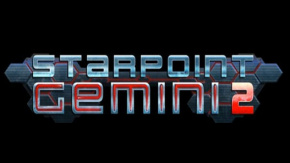


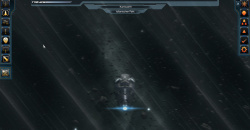
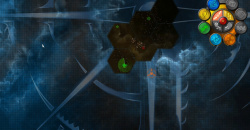
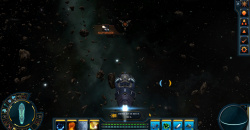
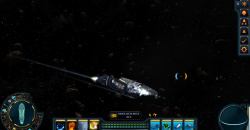
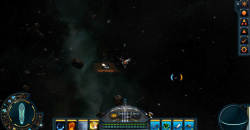

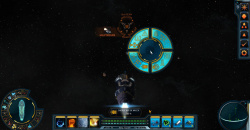

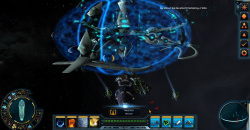
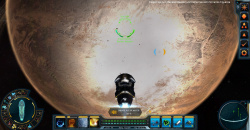
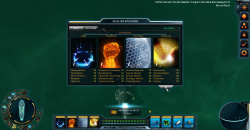
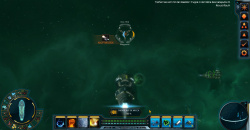
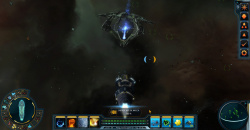
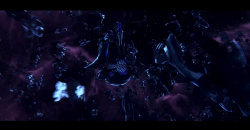
.